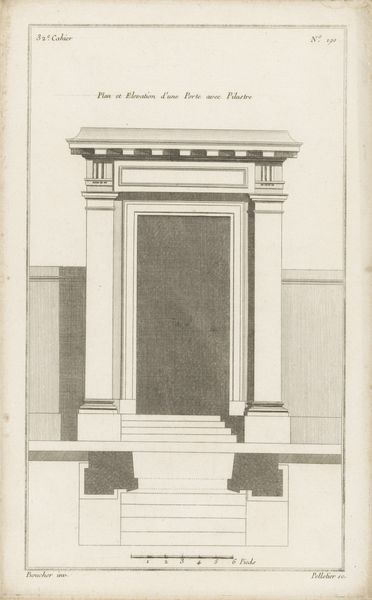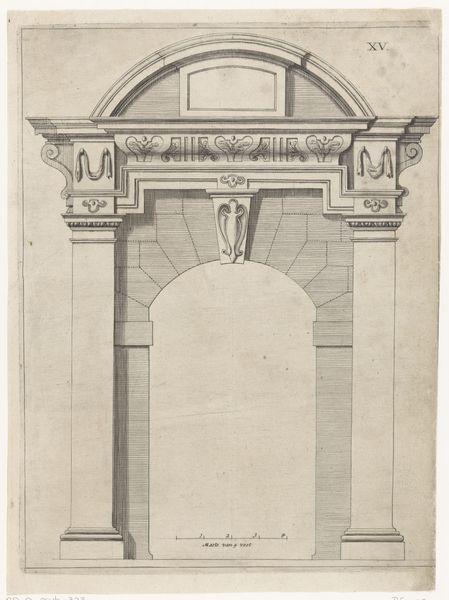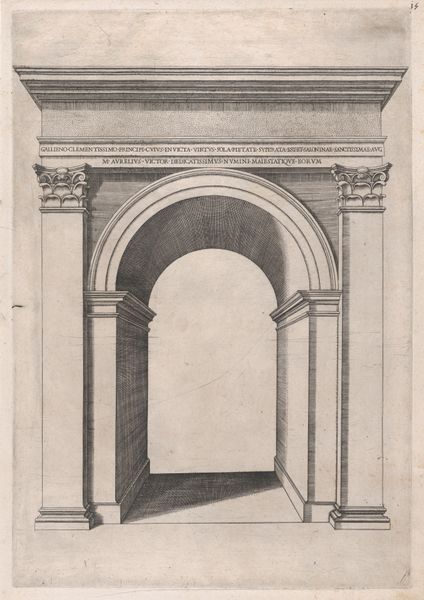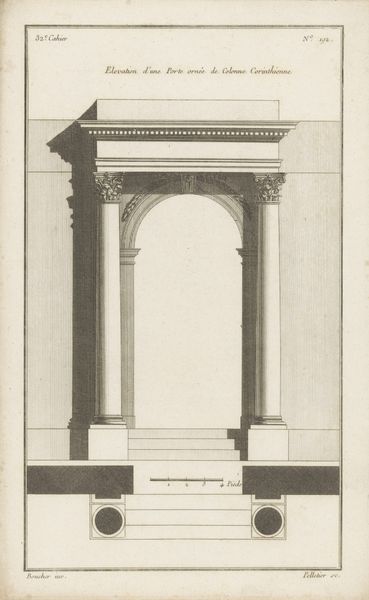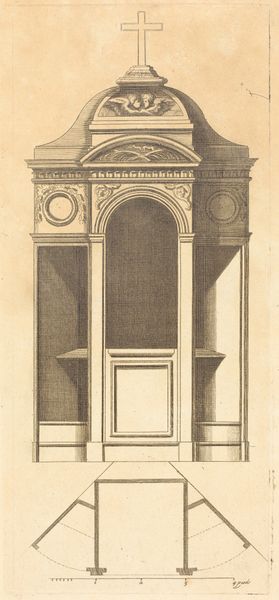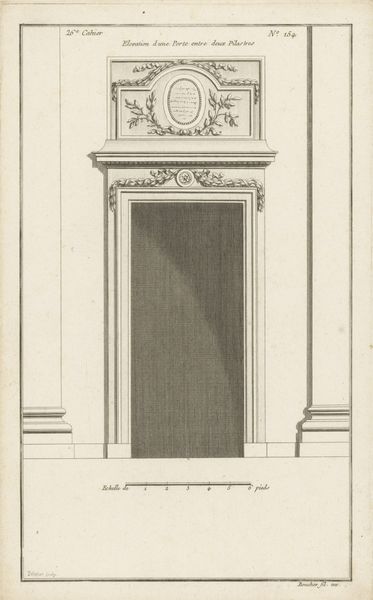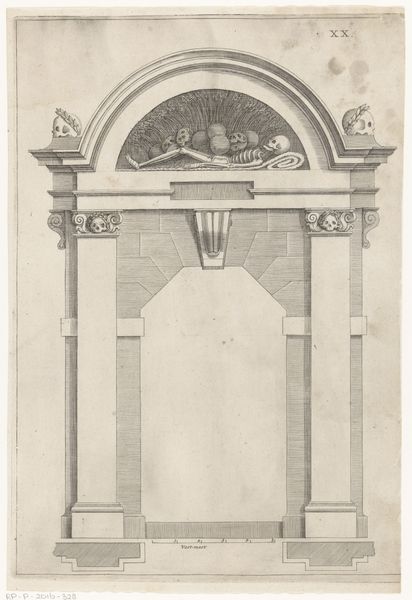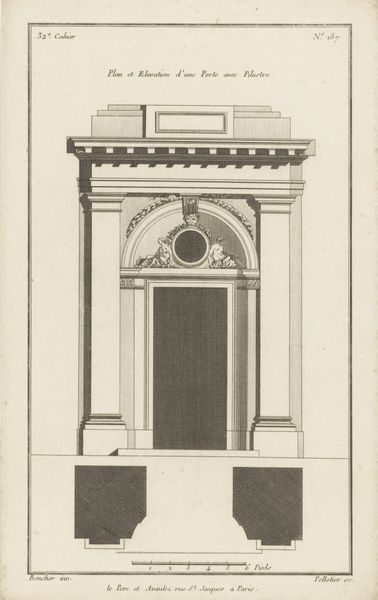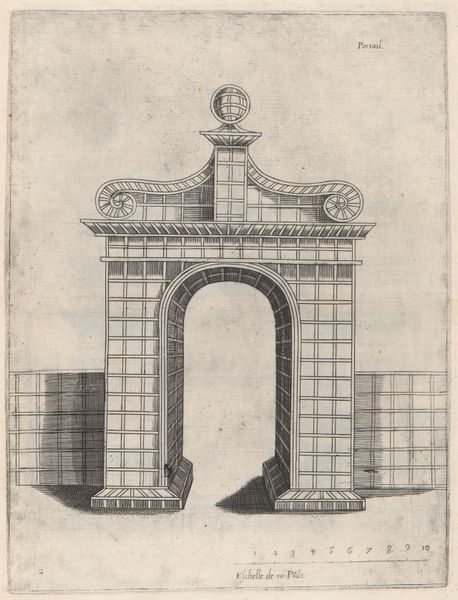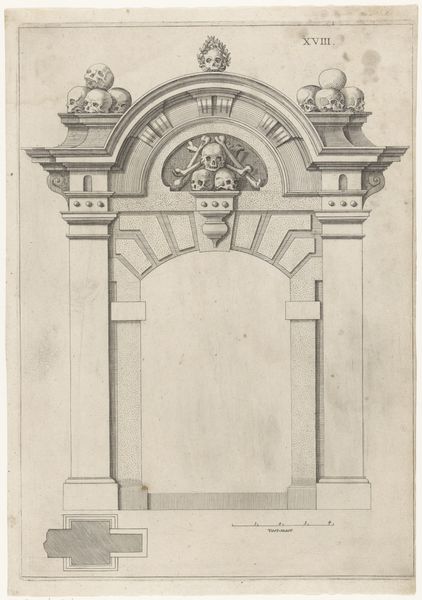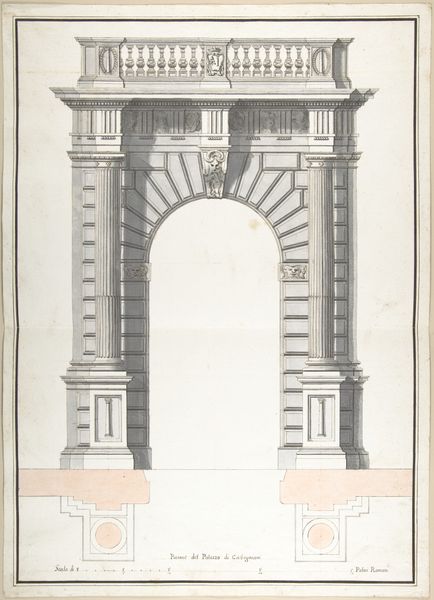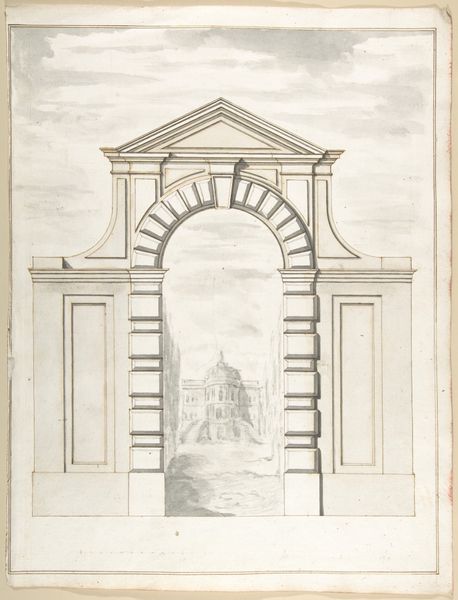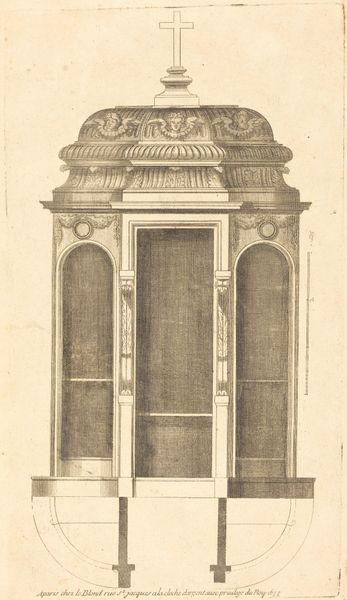
Dimensions: sheet: 9 1/8 x 6 3/16 in. (23.1 x 15.7 cm)
Copyright: Public Domain
Curator: Looking at this ink and paper drawing from sometime between 1715 and 1754 titled "Elevation of Rustic Doric Doorway," one is immediately struck by its quiet austerity. Editor: Yes, a cool, muted tonality. There’s a rigid geometry and architectural form. Is this neoclassical style making an argument about the political and social order of the time? Curator: Certainly. Consider how neoclassical architecture, especially drawings like this one, became tied to expressions of civic virtue and the authority of the state during the Enlightenment. Academic art, through the expression of architecture, began to explore form in a novel way. Editor: And this wasn’t a neutral expression, was it? Who was allowed through this doorway, literally and metaphorically? The "rustic" element hints at a potential tension, perhaps an idealization of rural values being co-opted by dominant powers? Curator: That's an insightful point. While embracing classical forms, the drawing simplifies them, almost stripping them bare. This “rustic” element speaks to a dialogue within neoclassicism—a potential appeal to authenticity even as it maintains strict formality. The rigid structure reminds us who had power and agency in shaping the built environment, which ultimately affected everyone's lives. Editor: So this elevation isn’t just a neutral plan, it’s a carefully constructed visual argument that elevates certain social structures while possibly marginalizing others? Its focus on an abstract form almost completely ignores how the architecture impacts social realities. Curator: Exactly. Even representations of the built world carried embedded socio-political values, subtly influencing perception and, more importantly, perpetuating societal narratives regarding form and power. Editor: Engaging with “Elevation of Rustic Doric Doorway” through the combined lenses of social history and theory really sheds light on the complex dynamics present even within seemingly simple architectural drawings. Curator: Indeed. It highlights how art history isn't confined to aesthetics, but allows us to trace power structures imbedded within even seemingly straightforward representations.
Comments
No comments
Be the first to comment and join the conversation on the ultimate creative platform.
